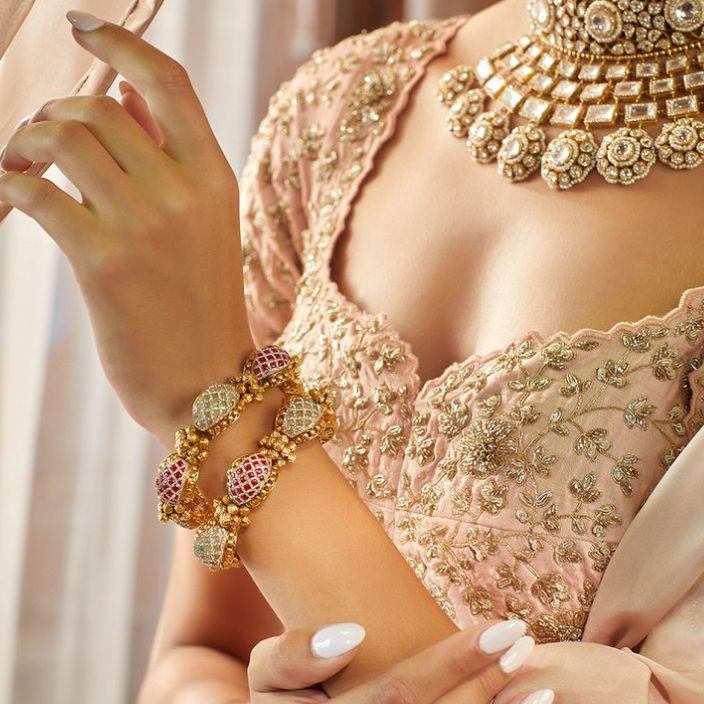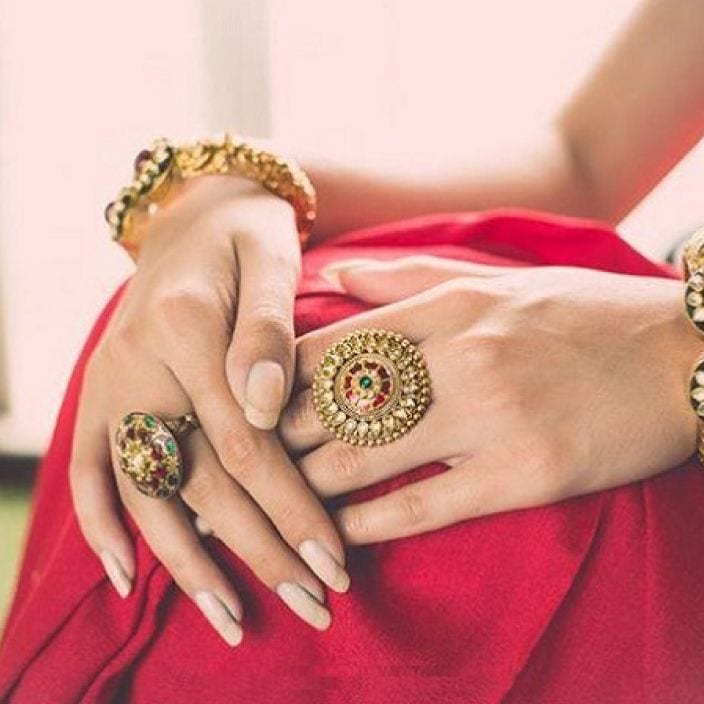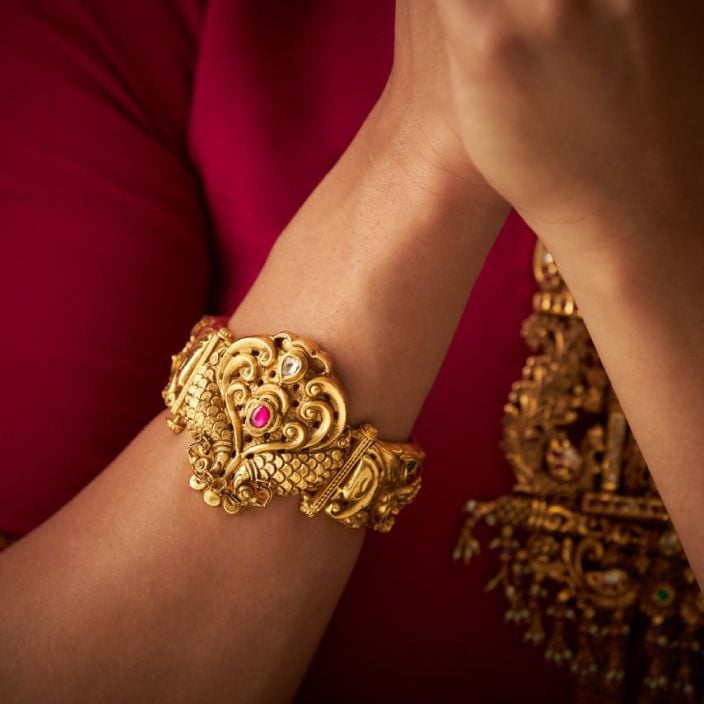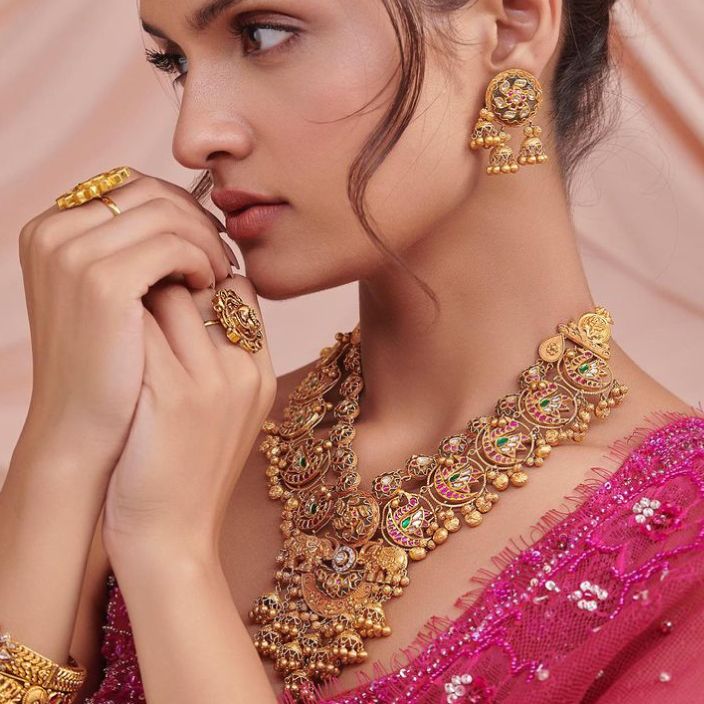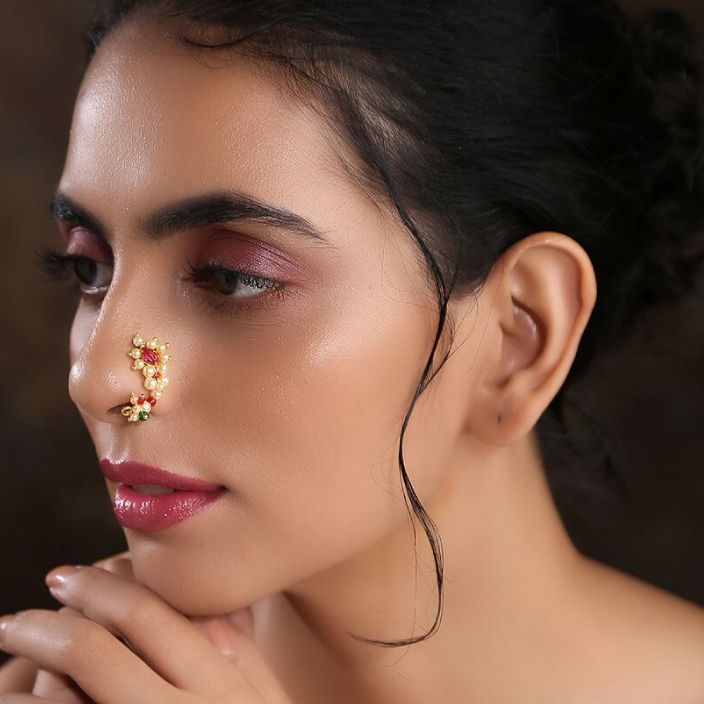For best prices and early deliveries, WhatsApp us at. 918488070070
Temple Jewellery
India is the land of temples. Temples have nurtured faith, glorified architecture, unravelled scientific knowledge, inspired artisans and become a part of India’s rich cultural heritage. Temple jewellery has its origin and draws inspiration from these ancient temples. The temple jewellery meaning lies in its ability to connect tradition with craftsmanship, from motifs of peacocks and lotus to depictions of Gods and Goddesses, every piece of temple jewellery holds cultural and religious significance. Handcrafted in pure gold and embellished with gemstones like diamonds, rubies, emeralds and pearls, temple jewellery of the 21st century is crafted with a traditional look and contemporary feel. Chunky 22-karat necklaces, thick bangles, dangling earrings, customary kamarbands, tinkling anklets, and forehead maang tikkas represent the various types of temple jewellery and brought to life using filigree work, granulation, and embossing. From daily wear and bridal trousseau to heirloom pieces, temple jewellery is a favourite acquisition for many families in southern India. You can also find temple jewellery in silver or metal with gold polish.
Tracing the Roots
Temple jewellery was first fashioned for deities, calling it the ‘ornament of Gods’. Temple Jewellery origin can be traced back to the era of Raja Raja Chola I (985 -1014AD), who built the first grand temple at Tanjavur. At that time, Raja Rajesvara temple, also called Brihadeeswarar temple, was the tallest and most opulent Hindu temple with bejewelled idols.
Subsequently, kings, queens, noblemen and wealthy devotees contributed to its richness by adorning temple deities in chunky gold jewellery. Generations of skilled artisans who styled jewellery for deities and temple dancers in Tamil Nadu and Kerala are now crafting temple jewellery for gods, goddesses and girls of India. Popular items include harams, nakshi jewellery, and Vanki armlets.
The Making of Temple Jewellery
The art of making temple jewellery dates back generations. In earlier times, temples housed skilled artisans dedicated to making jewellery for the deities. Today, bridging heritage with modernity, temple jewellery designs have evolved to appease everyone from Millennials to Gen Z. Like any other jewellery, temple jewellery follows a process to perfection. It requires immense focus and a skilled hand to complete a design in few days or several weeks.
From traditional drawings to CAD drawings, this is the first step in making temple jewellery. The designer uses intricate motifs, mythology, and temple architecture to create stunning designs. A master model or prototype is prepared in 3-D printed resin or metal. Once the master model is perfect, the artisan makes rubber moulds which help duplicate the design. The artisan fills the rubber moulds with molten gold or silver and dye in a complex casting process. Once it cools, the mould breaks easily to reveal the shape of the jewellery. The artisan then grinds or removes any nub or extra piece of metal by holding the gold or silver piece against a spinning grinding wheel. Then, several pieces are soldered together according to the design.
After casting and soldering, the jewellery piece is cleaned to remove excess impurities. The stones are then set using prong, bezel, channel, or pave setting. The polishing process lends a lustre to the item. Polishing wheels and buffing compounds are used to give a high finish to the jewellery. Sometimes, silver is gold-plated to give it a richer look. Depending on the base metal and the final look, plating helps to protect the jewellery against scratches and makes it appear more stunning. Unique additions like Shri Chakra motifs and Vandiyanam (waist ornaments) are often crafted into temple jewellery to preserve their traditional charm. The last step in creating temple jewellery is a quality check. The artisan inspects the jewellery for any loose stones, scratches or discolouration. Once everything is perfect, the jewellery is ready for sale.
Today, machines in various stages are helping to reduce the cost and time required to create a single stunning piece of temple jewellery.
Cultural Significance
Temple jewellery has a strong cultural significance. In South India, women wear temple jewellery, believing it brings blessings and abundance. Also, with Gods, Goddesses, and religious symbols being the central theme of temple jewellery, it invokes a sense of divinity in the wearer.
From daily wear to bridal wear and traditional festivals to religious ceremonies, designs like Manga Malai, Kasulaperu, and Vanki armlets are entwined with India's rich religious, social, and artistic culture.
Evolution & Adaption
The centuries-old craft of making temple jewellery has come a long way. From dressing up deities to Bharatnatayam and Kuchipudi dancers, the intricate designs of temple jewellery have retained their motifs and designs to make a mark in modern fashion.
Temple jewellery has become increasingly popular among the brides of South India and has even earned the attention of celebrities and influencers. Temple jewellery elements are incorporated into modern fashion accessories to woo the young and trendy. From fashion accessories to high-end jewellery, temple-inspired collections are here to stay!

